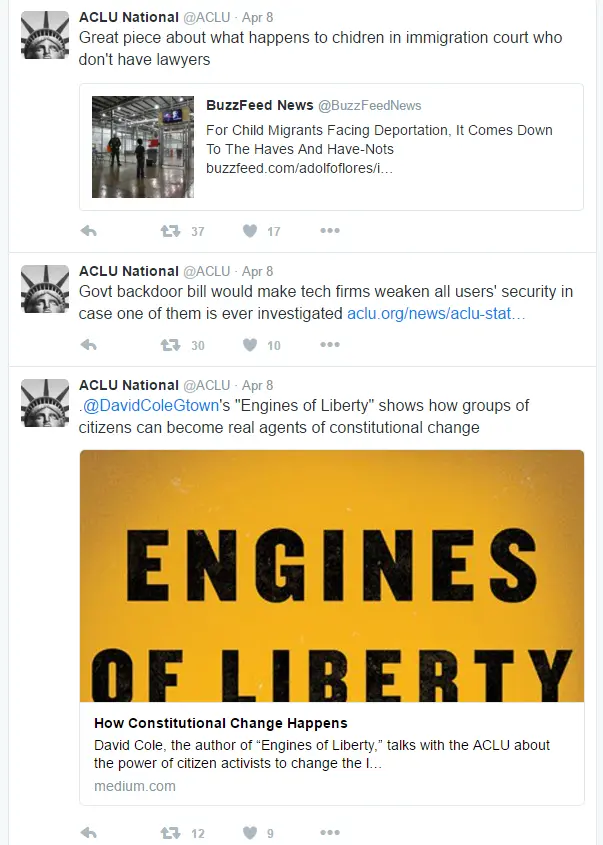In a perfect world, we could churn out good content marketing with ease and time to spare. But we know the reality is that producing good content requires time and effort you’re likely short on. The good news is that you don’t have to start from scratch. Repurposing your own content is one way to maximize existing website content. But there’s also a lot of great, quality content out there from other people. And it’s waiting to be sifted, sorted through and shared. That’s the crux of content curation.
What is Content Curation?
Content curation is the process of searching for and sharing the most valuable external content with your audience. The best content marketing is a mix of original and curated content. Some people subscribe to the 80/20 rule: 80% content curation from third parties and 20% original content (typically for social media curation). But if you’re not a stickler for math, content curation can happen pretty organically. Whenever you come across something that might be meaningful to your audience, share it with them.
Content curation can be useful in different elements of your content marketing strategy. This includes blogs and email newsletters, where you could write summaries or analyses of the shared content in an individual blog post. Or you could develop and distribute a weekly or monthly round-up of curated stories to provide an aggregated list for your readers. Let’s look at some of the benefits of curating content.
Benefits of Content Curation
Content curation can offer a couple of important benefits for your nonprofit.
Establishes Credibility and Authority
Sharing external content lets you position your nonprofit as a reliable information source. It helps that the information you’re posting is specifically relevant to your audience. Good content curation shows that you’re on top of the conversations taking place and engaging in a dialogue with other movers and shakers. It really only takes a few examples of well-curated content for a visitor to view you as a trusted source of valuable news and information.
Builds Goodwill
Content curation is about playing nice on the playground, including (or especially) those from similar nonprofits who may be your “competition.” Engaging with other experts, influencers and your fellow colleagues can help expand your reach with new audiences. It really amounts to a give-and-take system that acknowledges how everyone can benefit from mutual collaboration and sharing. And by sharing third party content, you’re ultimately showing your audience that your commitment to providing them with the best content means it doesn’t matter whether it’s written by you or by someone else. Who wouldn’t respect that type of approach?
Gives the People What They Want
This last benefit of content curation is simple, but significant: sharing more helpful information than you can write yourself. There’s no shame in admitting you’re busy without the time to regularly produce original content. But that doesn’t mean your audience should suffer. Curating content shows you’re giving people what they want, even if it’s not directly from you. Content curation lets you share more content with your audience (and provide more benefit to them) than you’d otherwise be able to. You really can’t beat that.
Curation in Action
So what happens in between the “search” and “share” phase? Well, that’s the most important (dare I say fun?) part. Curation isn’t just a “set it and forget it” type of engagement that results in just a retweet or a share. Content curation is about framing and teeing up the information for your readers in one of the following ways:
- Summarizing: In your own words, highlight the main points of the content.
- Contextualizing: Address why and how this content is important and meaningful to your audience.
- Annotating: Inject more of your voice by adding your insights about the content. Adding some of your nonprofit’s perspective and commentary is what makes this a value-added offering.
- Organizing: Arrange and present curated content in a way that makes sense to your audience.
The ACLU does a great job of content curation on its Twitter page. The organization consistently puts out a good mix of original content (second tweet) and curated content (first and third tweets). Both of the curated articles offer a concise and compelling summary of the article. The shared content aligns with the ACLU’s work and is presented in a way that should compel ACLU’s followers to check it out.

In part two of this series on content curation, we’ll look at some best practices and take a closer look at how to put this into play for your nonprofit. Do you curate content on your nonprofit’s website? What feedback have you received from your audience? I’d love to hear from you in the comments below.

Thanks for the kind comment and reading our blog.
are their vendors from which a nonprofit could purchase curated content specific to their mission/focus? For example, behavioral health, addiction recovery, homelessness, suicide awareness?
Hi, Laura. Great question! There’s no need for nonprofits to purchase curated content, so long as you give sufficient credit to the original source of the content. For example, in the ACLU Twitter example, they mention the author as well as link to the content in their tweet. To curate content specific to your audience, get a feel for the influencers in your space and start sharing (and attributing) that authoritative content to build a relationship with both your audience and the influencers. I hope that helps!